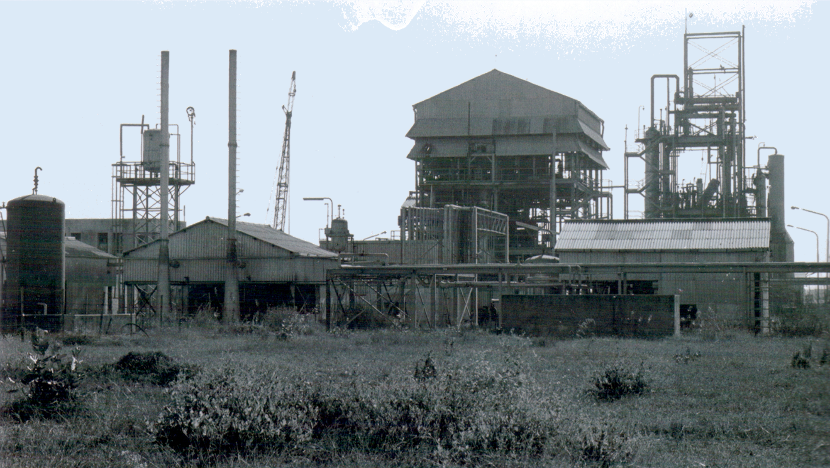“You can’t let your failures define you. You have to let your failures teach you.” — Barack Obama
Forty years ago, on December 3, 1984, the Union Carbide plant in Bhopal, India released 45 tons of methyl isocyanate. The official toll of immediate deaths is 2,259 people. Estimates of the final death toll ranges but is generally thought to be between 15,000 and 20,000. The incident led the United States to create the Process Safety Management (PSM) standard, which became effective 1992. Union Carbide, one of the largest chemical companies in the world, no longer exists except as subsidiary of Dow Chemical.
Much will be said about the Bhopal gas tragedy today. What is most important is that we continue to learn from that terrible disaster.
I Remember
I started my career in the chemical process industry with Union Carbide in 1977, as a co-op at a Linde cryogenic gas plant. I was very aware of the safety culture at the plant where I worked and throughout the division. I was no longer working for Union Carbide when the Bhopal gas tragedy occurred, but I had a hard time reconciling it with my own experience. So, it was easy for me to accept the common wisdom in the United States at the time, especially within the industry: “Bhopal is a plant in a third-world area. What do you expect? This could never happen here.” This despite the string of disasters that had occurred before—Texas City, 1947; Woodbine, 1971; Romeoville, 1984—and occurred soon after—Henderson, 1988; Norco, 1988; Pasadena, 1989; Channelview, 1990; Sterlington, 1991. I was sobered to realize that as a young engineer, I could find myself in a position where my decisions could result in the deaths of dozen, even thousands.
“The Worst In History”
Over the years, various authors have put together “top ten” lists about industrial disasters, although I prefer the term “worst ten”. It’s not a competition anyone should want to win, and these are certainly not lists that any company or any town should want to be on. I looked at ten of the lists. They go by names like “10 Worst Industrial Disasters of All Time”, “The World’s Worst Industrial Disasters”, and “15 Worst Industrial Disasters in the World”. While no two lists are the same, the Bhopal gas tragedy is on all ten lists. It is the only industrial disaster on all ten lists. And in terms of fatalities, it is the worst.
This is a composite of the ten lists, weighted for number of appearances and ranking on each list:
- Bhopal Gas Tragedy; Bhopal, India; December 3, 1984; 2,259 killed immediately
- Rana Plaza Collapse; Dhaka, Bangladesh; April 24, 2013; 1,134 killed
- Chernobyl Nuclear Disaster; Pripyat, Ukraine, April 26, 1986; 30 killed immediately
- Benxihu Colliery Coal Dust Explosion; Liaoning, China; April 26, 1942; 1,549 killed
- Halifax Explosion; Nova Scotia, Canada; December 6, 1917; 1,782 killed
- Fukushima Nuclear Accident; Fukushima, Japan; March 11, 2011; 1 killed
- Courrières Mine Disaster; Pas-de-Calais, France; March 10, 1906; 1,099 killed
- Seveso dioxin release; Seveso, Italy; July 10, 1976; 0 killed
- Deepwater Horizon Explosion and Oil Spill; Gulf of Mexico; April 20, 2010; 11 killed
- Exxon Valdez Oil Spill; Prince Williams Sound, Alaska, USA, March 24, 1989; 0 killed
Unfortunately, we all tend to take a short-sighted view of history. If we can’t remember it ourselves, or know someone who can remember, we forget it or discount it entirely. For instance, as far as I can tell, the worst industrial incident in history didn’t occur after the start of the Industrial Revolution. It occurred on May 30, 1626, in Beijing, China. The Wanggongchang Armory, one of several gunpowder factories in the city, exploded. Contemporary reports put the immediate death toll at around 20,000.
The Wanggongchang Armory explosion of 1626 didn’t make any of the lists. I learned about it from an engineering student.
Industrial Disasters
As the professor for a graduate class on manufacturing process risk assessment, I have an assignment where I ask my student to create a list of 10 industrial disasters. Not the worst 10 disasters, but 10 disasters that resulted in at least 10 fatalities. The assignment requires that they identify a disaster from the previous year (industrial disasters are still happening), a disaster from the 19th century or earlier (industrial disasters are as old as industry), and from at least four different continents (industrial disasters are a global phenomenon).
In fourteen years of teaching this class, I have had 935 students. Of them, 386 have listed the Bhopal disaster as one of their 10 disasters. No other disaster comes close in capturing the attention of today’s engineering students. We should all take comfort in that. As the Spanish-born philosopher, George Santayana said in his 1905 book, The Life of Reason, “Those who cannot remember the past are condemned to repeat it.” We need to continue to teach engineering students about the disasters that have plagued our industry. There is no need for every generation to learn only from its own experience.
Never Again
Four decades later, our focus needs to be on keeping the memory of the Bhopal gas tragedy alive. The incident changed those of us who were around when it happened. Increasingly, though, older engineers who remember Bhopal are leaving the work force, leaving it to younger engineers to discover for themselves. I would like to be able to say, “Never Again,” but unless we consciously work to keep the memory of this disaster and its lessons alive, the memory will fade. Experience tells me that may be too optimistic. Nonetheless, we need to try.

Don’t you think we should stop making pesticides? and any other chemicals that are terrible for the planet? Companies are profiting at the cost of health and no one seems to be concerned about it